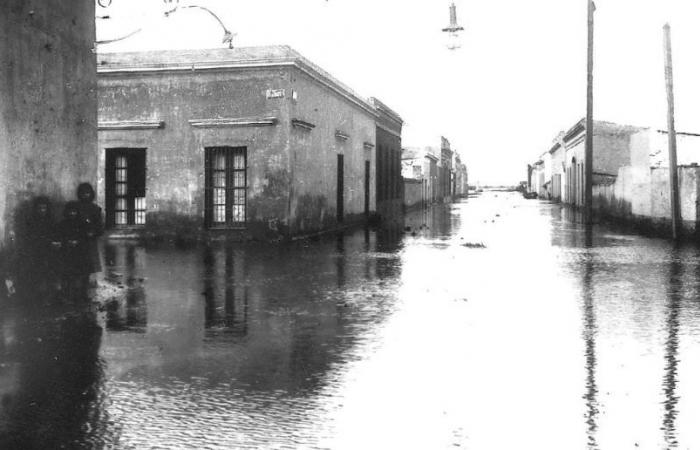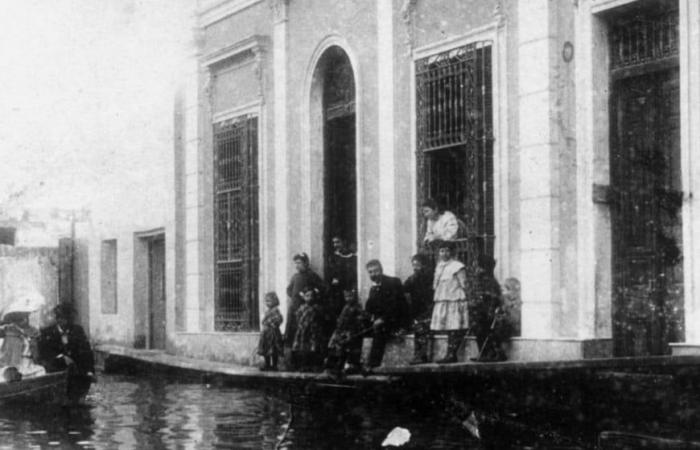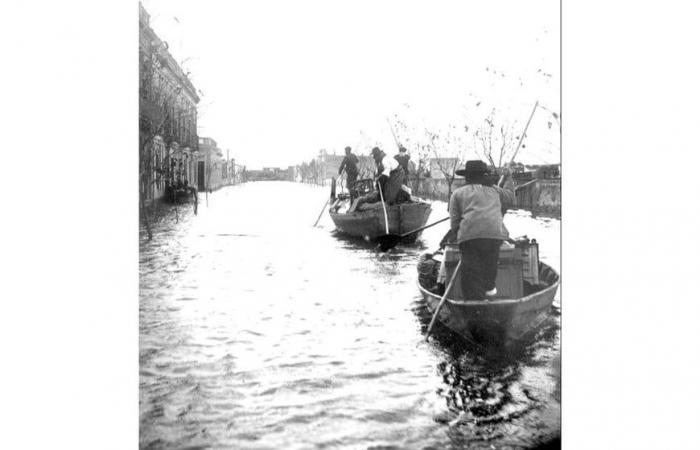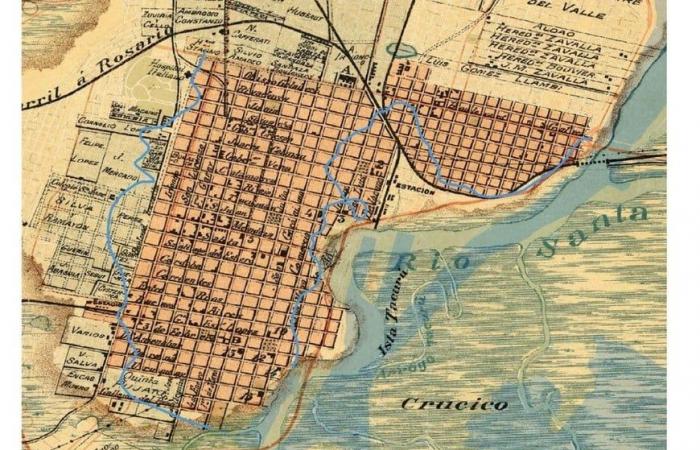Located on an alluvial terrace, Santa Fe suffers from periodic flooding of its river banks and, on occasion, the incursion of water into the urban ejido. This is attested to by recent history, when the overflow of the Salado River submerged a third of the city and left a significant number of fatalities.
The first official record is from 1878: a flood of the Paraná River affected a large part of the small village. Santa Fe did not have a defense system and its streets were at a lower level than the current one since the urbanization works had not yet arrived. The subsequent paving of its main arteries would modify that condition against the arrival of the waters. Despite this, at that time works were already being carried out such as the construction of a waterfront on the western edge of the Setúbal lagoon, the inauguration of which was in 1901.
But between June 8 and 16, 1905, the people of Santa Fe lived days of tremendous anguish, affected by a colossal flood of the Paraná of which indelible memories are still preserved. In those years, the city showed off the latest advances in urban matters: the Botanical Garden, the completion of the Municipal Theater, the Municipal Bank building; also the cobblestones and public lighting with electric arc lamps and the long-awaited Santo Tomé-Santa Fe highway.
However, in June 1905, the waters covered almost the entire city, while coastal towns such as Colastiné and Rincón were isolated for days. The hydrometer registered a general record in the height of the waters: 7.83 meters, a mark never equaled in subsequent water events.
That winter at the beginning of the 20th century, Plaza España, in front of the legendary “Las Colonias” pharmacy and one block from the French Railway Station (today the Bus Terminal), was hidden under the mirror plane of a calm and vast lake, which invited people to travel through it in boats and canoes. That space, which had been a conspicuous symbol of the thriving trade, was transformed over the years into a geographical landmark of the catastrophe.
The flood news
The Santa Fe press experienced the tragedy with special commitment, and today we can turn to it through its valuable archives. The newspaper Nueva Época warned that “from June 4, 1905, fear began to settle among the people of Santa Fe.” And he commented that the processions that the Church organized with its faithful, begged for God’s mercy, and filled the only streets through which one could walk.
Meanwhile, the newspaper El Litoral, in 1925, twenty years after what happened, recalled: “The city of Santa Fe had become a Venice, through whose streets people traveled by boat, like the queen of the Adriatic.” And in 1955, the evening chronicle stated: “The Creoles and immigrants who lived in the city at that time had always seen waters extended or meandering in their surroundings, but never in volume, pressing and transporting dragging and floating materials with such force. as in those first days of June 1905″.
Mapping a city under water
In that city that entered the 1900s with a large and diverse population, and increasing port and commercial activity, the cold water arrived in constant pulses and flooded streets, homes and desires. The threatening march of the vital element extended over 49 blocks. A previous flood, in 1878, had advanced more than that of 1905 between Buenos Aires (now M. Zazpe) and Mendoza streets, because the pavement and the buildings that would cover and raise the elevation along that route had not yet arrived. Instead, in 1905, water occupied the Mendoza area to the north along the eastern edge of the ejido.
To understand the scope of the episode, it is worth mentioning that the water reached the Candioti neighborhood through Belgrano and San Luis streets, to Gálvez Boulevard; through the Heras to Ituzaingó; through Alvear to Gobernador Candioti and so on in the other streets until reaching Oroño Park, which was completely flooded.
The FCSF station and workshops were completely flooded, from the level crossing of San Luis and Santiago del Estero streets to Rivadavía, and from there through Suipacha to the middle of the block between San Martín and San Jerónimo. Through San Martín to Gobernador Vera, continuing on May 25 to La Rioja, which received water to the corner of the Iglesia del Carmen; also through Tucumán until a few steps from San Martín, the same as through Primera Junta and Falucho.
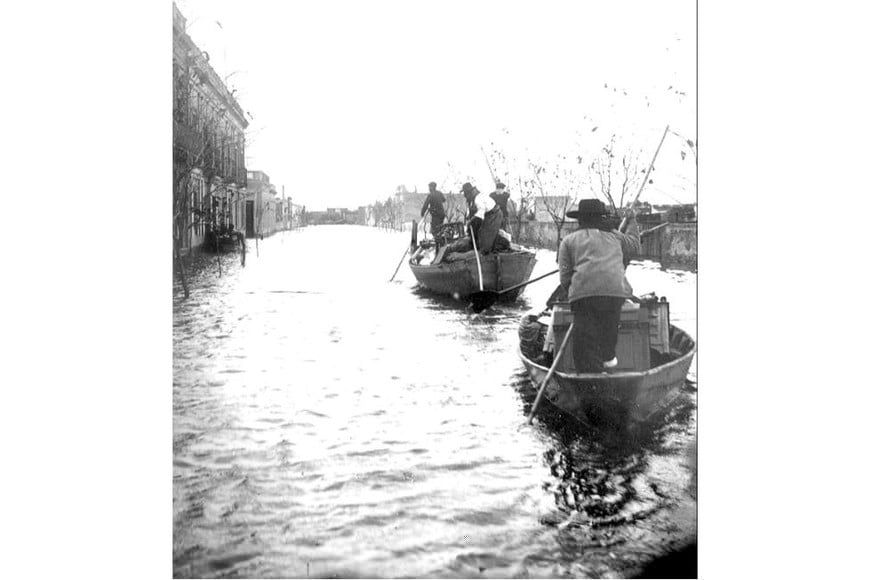 The popular sectors moved around in canoes and canoes.
The popular sectors moved around in canoes and canoes. On May 25 from Mendoza south until reaching the river, although it did not cover the corner of General López. In the West, through Zavalla from JJ Paso to Amenábar, through General López to the Central Miter Railway building, covering the low lands on the Salado coast to what was the Municipal Cemetery and the vicinity of the Italian Hospital (today Parque Garay) . In summary, it can be said that the water found its limit approximately at the current level of 16.20 meters above sea level according to the IGN.
Relief for the flooded
The small living area of the city was transformed into an improvised shelter for the neighbors. There was no home, business premises, workshop, warehouse or school where individuals or entire families had not been protected. Ranches, tents and wooden huts were also improvised.
The Nueva Época newspaper reported in its pages: “The river rises at a rate of one and a half centimeters per minute (…) the number of flooded families is so fabulous that there is already a lack of places to house them (…) The commission Until June 16, the rescue team counted the rescue of 1,400 people in coastal areas alone. That day, the water began to slowly recede.
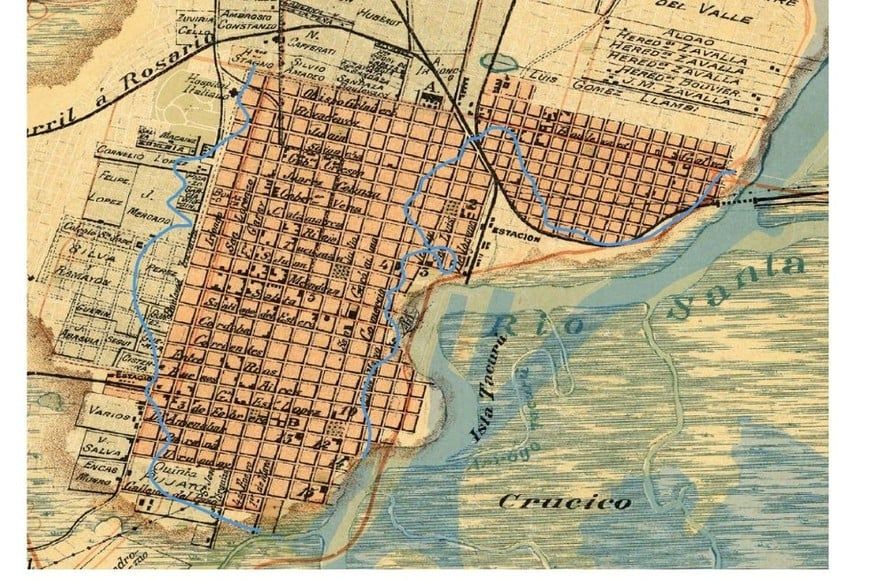 Carlos Chapeaurouge’s city plan from 1901 and in blue the line that indicates how far the river water reached.
Carlos Chapeaurouge’s city plan from 1901 and in blue the line that indicates how far the river water reached. In those years, the mayor of Santa Fe was Manuel Irigoyen, a prominent pharmacist and promoter of this activity in our city. He was president of the Order Club and alternated with provincial politics when he was elected deputy to the Constituent Convention of 1899. Later, under the government of Rodolfo Freyre, Irigoyen acted as provincial senator representing the departments of Belgrano and San Cristóbal.
In that winter of 1905, and once the water began to subside, the Municipality ordered an inspection of the affected homes. For reasons of safety and hygiene, a prohibition on returning to homes was decreed until the city’s Assistance and Public Works Office prepared a health report for each affected home.
The commission in charge of distributing donations and financial compensation for the sum of five thousand pesos was headed by Mayor Manuel Irigoyen and doctors Benito Pinasco and Miguel Parpal along with neighbor José Maciá.
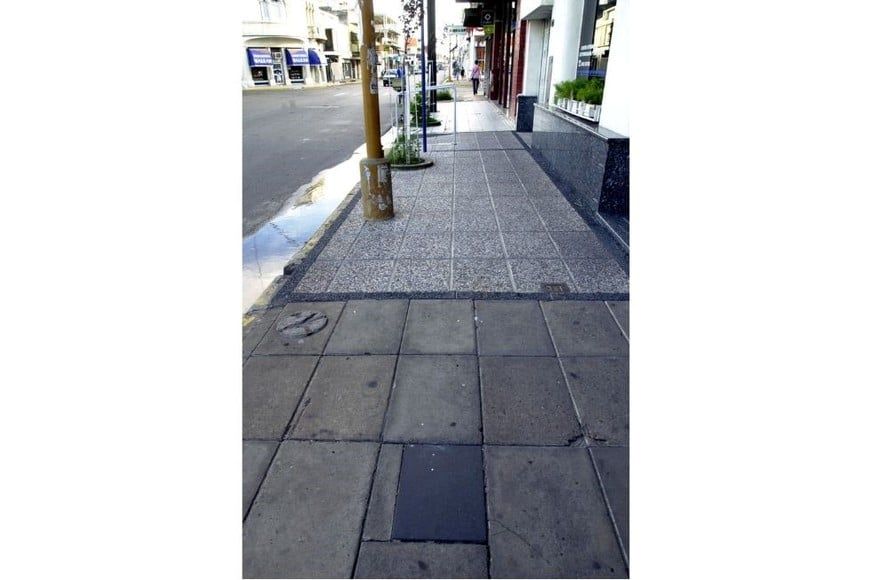 The plaque that remembers the limit that water reached, Rivadavia 3255.
The plaque that remembers the limit that water reached, Rivadavia 3255. According to the report submitted to the Deliberative Council by this Commission on June 29, 1905, shelters were improvised in the center and northeast of the city for the families affected by the flood. The Commission housed 2,270 people until the 17th. In the town of Candioti, 542 people were housed: 316 in 67 tents, 35 in 6 ranches. Another 56 in La Calera, 106 in the School of Arts and Crafts and 19 in the Aguas Corrientes building.
In the pavilions under construction of the Hospital de la Caridad (today Cullen Hospital), children of both sexes were housed, 120 of all ages. In two underground galleries, between mounds of lime and sand, improvised braziers at the foot of the cots gave a gloomy, gloomy and humid image. Among them, there were dogs, cats, and farm animals, which accompanied the families in the face of the disastrous fate they had to endure.
On San Juan Street (today Primera Junta), between San Martín and San Jerónimo, in a small and gloomy space without windows, 69 people spent their days, begging and praying for their lives. Each family formed a separate consolation group, in which they encouraged each other not to lose their breath in the face of an uncertain future.

